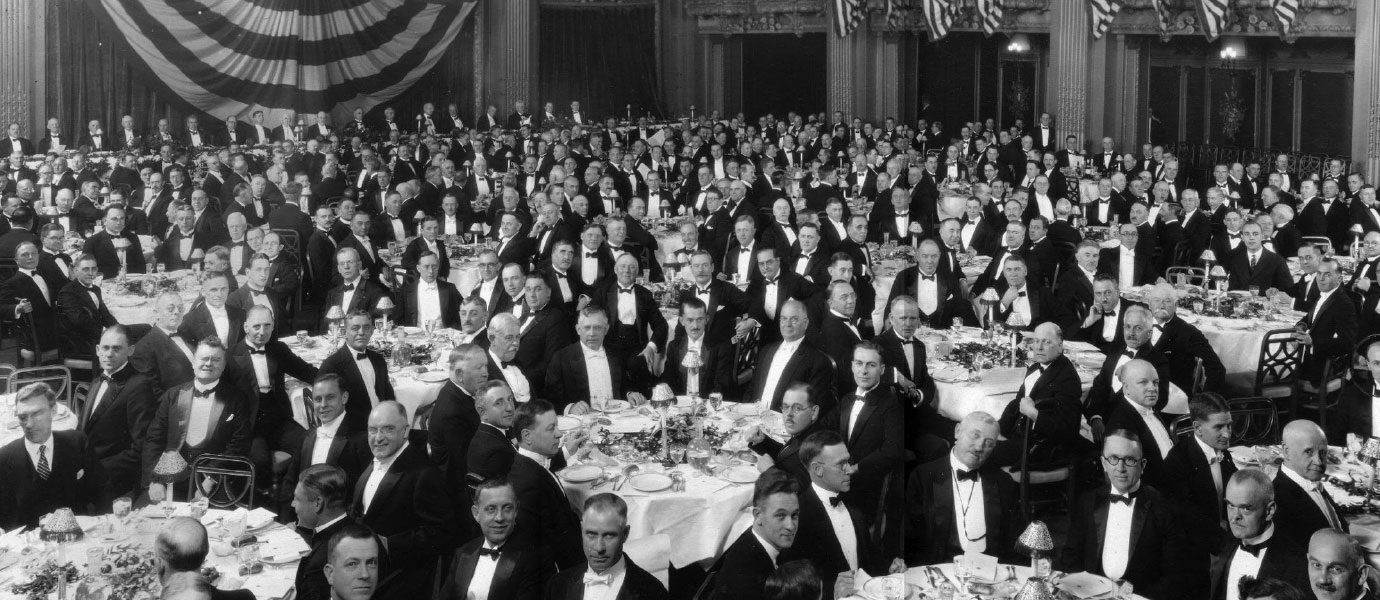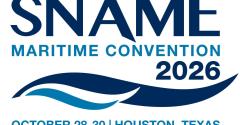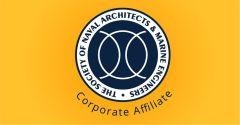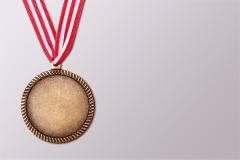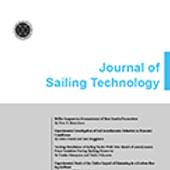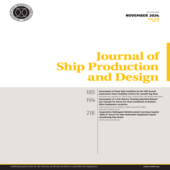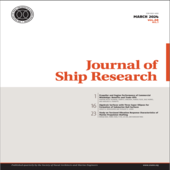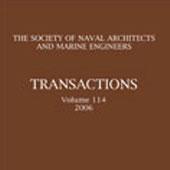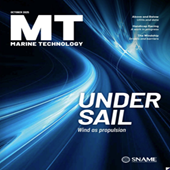Technical and research (T&R) | Bulletins and reports
Tables (73) representing the data file on Resistance Coefficients of Barges from the Ship Hydrodynamics Laboratory of the University of Michigan are presented. Raw barge data were collected for 125 barges at light, ballast and full-load drafts. Appendices list recorded variables, and the speed/length ratio calculation with other notes.
A gathering, analysis and presentation of data comparing the rate and extent of a ship's rudder movement to the response of the vessel at three ship speeds (7, 14 and 24 knots) and a range of rudder rate from about 2.1 to about 5.5 degrees per second.
This workbook is dedicated to Abraham Taplin whose expertise and technical contributions to this project have helped to make it a relevant and practical document. Abe not only developed the well written and organized module on rudder design, but helped with the rest of the document by rewriting other portions and offering many constructive suggestions and comments that improved overall quality and value. Abe was a dedicated member of Panel H-10 both before and after his retirement. His insightful and articulate contributions to the Panel coupled with his kind demeanor made Abe a highly respected contributor to the Panel and to the profession of naval architecture in general. His presence is sorely missed.
In this bulletin, we propose and detail a comprehensive theory and numerical implementation of a six degree of freedom (6‐DOF) dynamic AUV model utilizing CFD and first principles, providing a systematic approach to accurately estimate all parameters required for maneuvering. Possible simplifications and methodologies for different AUV profiles are covered, rendering the study applicable to any torpedo‐profiled underwater vehicle that uses control surfaces to maneuver. Potential redundancies between added‐Coriolis and hydrodynamic damping terms in the literature are also clarified in this study. Coordinate systems are discussed, and the physical implementation of control‐commands (for roll, pitch, and yaw) onto various sets of control surfaces is detailed. The implementation of all hydrodynamic terms is then covered, followed by coefficient estimation using CFD Planar Motion Mechanism tests and other methods. A final nonlinear 6‐DoF model is presented both with and without feedback, for which model performance is evaluated using a known AUV and a fully‐conceptual AUV. This bulletin is intended to serve as a complete guide to control and simulate any AUV to a high degree of accuracy..
This bulletin represents the conclusions of one of these groups, Panel SP-4 (Cost Reporting). It summarizes their investigations into cost reporting systems currently in use and presents its recommendation of a direct labor cost reporting system in which a well-defined work package is utilized for reporting and control. The compatibility of this system with that outlined in the Department of Defense (DOD) Instruction 7000.2 is also discussed.
Under the direction of the Bureau of Ships' Department of the Navy, a critical survey has been made of the information relating to the buckling strength of metal structural members under compressive loading. The purpose of the survey was two-fold:
(a) To provide naval architects with a compilation of the theoretical information which is now available in this field
(b) To summarize the results of this work in handbook form as a prospective design manual for drafting room use.
This Bulletin is a bibliography of 226 papers on the longitudinal strength of ships and related structural information published in 1958. This Bulletin is a historical reference.
Over the past few years the Hull Structure Committee of the Society of Naval Architects and Marine Engineers has been considering various aspects of hull structural design as well as typical design methods associated with certain selected structural elements. This is one of a collection of monographs representative of that work and is presented here in informal form to enable practicing structural naval architects to make use of it as they see fit. It is expected that as they live with it, desirable modifications will become evident and so ultimately a more definitive later edition or an entirely new work may result.
Over the past few years the Hull Structure Committee of the Society of Naval Architects and Marine Engineers has been considering various aspects of hull structural design as well as typical design methods associated with certain selected structural elements. This is one of a collection of monographs representative of that work and is presented here in informal form to enable practicing structural naval architects to make use of it as they see fit. It is expected that as they live with it, desirable modifications will become evident and so ultimately a more definitive later edition or an entirely new work may result.
